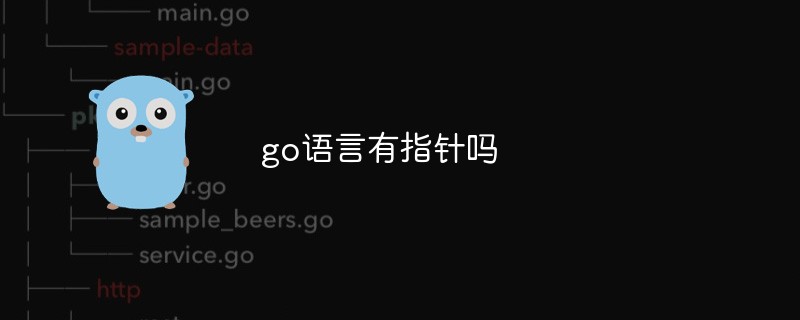
Go language has pointers; using pointers in go language can simply perform some tasks. The declaration syntax of the pointer format is "var var_name *var-type", where the parameter "var-type" is a pointer. Type, "var_name" is the name of the pointer variable, and the * sign is used to specify that the variable is used as a pointer.

Demo environment for this article: Windows 7 system, Go1.11.2 version, Dell G3 computer.
Go language has pointers.
Using pointers in the Go language can make it easier to perform some tasks.
We all know that a variable is a convenient placeholder used to refer to a computer memory address.
The address character of Go language is &. When used before a variable, the memory address of the corresponding variable will be returned.
The following example demonstrates the address of the variable in memory:
Example
package main
import "fmt"
func main() {
var a int = 10
fmt.Printf("变量的地址: %x\n", &a )
}The output result of executing the above code is:
变量的地址: 20818a220
Now what we have learned is the memory address and how to access it. Next we will introduce pointers in detail.
What is a pointer
A pointer variable points to the memory address of a value.
Similar to variables and constants, you need to declare a pointer before using it. The pointer declaration format is as follows:
var var_name *var-type
var-type is the pointer type, var_name is the pointer variable name, and the * sign is used to specify that the variable is used as a pointer. The following is a valid pointer declaration:
var ip *int /* 指向整型*/ var fp *float32 /* 指向浮点型 */
In this case this is a pointer to an int and a float32.
How to use pointers
Pointer usage process:
Define pointer variables.
Assign a value to the pointer variable.
Access the value pointing to the address in the pointer variable.
Add * (prefix) in front of the pointer type to get the content pointed to by the pointer.
Example
package main
import "fmt"
func main() {
var a int= 20 /* 声明实际变量 */
var ip *int /* 声明指针变量 */
ip = &a /* 指针变量的存储地址 */
fmt.Printf("a 变量的地址是: %x\n", &a )
/* 指针变量的存储地址 */
fmt.Printf("ip 变量储存的指针地址: %x\n", ip )
/* 使用指针访问值 */
fmt.Printf("*ip 变量的值: %d\n", *ip )
}The execution output of the above example is:
a 变量的地址是: 20818a220 ip 变量储存的指针地址: 20818a220 *ip 变量的值: 20
Go null pointer
When a pointer is defined, there is no When assigned to any variable, its value is nil.
nil pointer is also called null pointer.
nil is conceptually the same as null, None, nil, and NULL in other languages, and they all refer to zero or empty values.
A pointer variable is usually abbreviated as ptr.
View the following examples:
Examples
package main
import "fmt"
func main() {
var ptr *int
fmt.Printf("ptr 的值为 : %x\n", ptr )
}The output result of the above examples is:
ptr 的值为 : 0
Null pointer judgment:
if(ptr != nil) /* ptr 不是空指针 */ if(ptr == nil) /* ptr 是空指针 */
More For go language technical articles, please visit the go language tutorial column!
The above is the detailed content of Does Go language have pointers?. For more information, please follow other related articles on the PHP Chinese website!
 Usage of Type keyword in Go
Usage of Type keyword in Go
 How to implement linked list in go
How to implement linked list in go
 What are the Go language programming software?
What are the Go language programming software?
 How to learn go language from 0 basics
How to learn go language from 0 basics
 What are the methods to implement operator overloading in Go language?
What are the methods to implement operator overloading in Go language?
 What are the operators in Go language?
What are the operators in Go language?
 Introduction to the plug-ins required for vscode to run java
Introduction to the plug-ins required for vscode to run java
 insert into select
insert into select